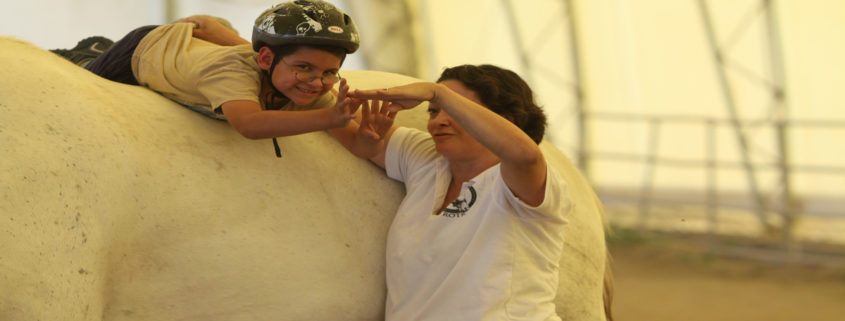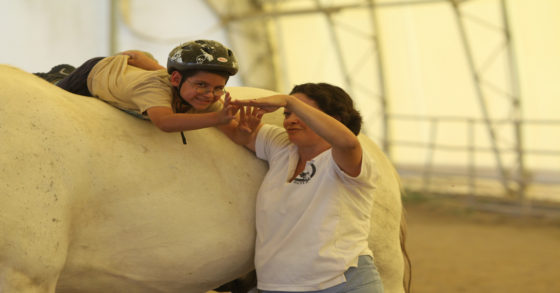Dyskinetic Cerebral Palsy: What You Need to Know
Last updated Oct. 18, 2017.
Dyskinetic cerebral palsy (also known as athetoid/athetosis or extrapyramidal CP) is characterized by abnormal, involuntary movements of the arms, legs, face and trunk. According to the Centers for Disease Control and Prevention (CDC), each year in the U.S., approximately 11,500 people are diagnosed with cerebral palsy (CP), and of those, 7–15% have the subtype dyskinetic CP. It is the predominant form of CP seen in full-term infants and is most commonly associated with birth asphyxia. While the underlying brain disorder is not progressive, disability may worsen with age.
Below, we’ll go over the symptoms of dyskinetic cerebral palsy, its causes and risk factors, and what you can do if your child’s cerebral palsy was caused by a birth injury.
Contents
Dyskinetic Cerebral Palsy Symptoms
Dyskinesia refers to fluctuating tone, leading to frequent involuntary (not under conscious control) movements, which are especially evident with movement or stress. Infants tend to be hypotonic (floppy) and lethargic.
With age, rigidity and dystonia (contractions) develop and involuntary movements usually develop after 9 months of age. Upper extremities are affected more than lower extremities. Speech and difficulties (explosive speech, grimacing, drooling and trouble swallowing) are common. Seizures and intellectual disability do occur, but are less common than in other types of CP. There may be an underlying hypotonia (low tone) or spasticity (stiffness or high tone) in muscle tone in the neck, trunk (torso), or limbs.
Three types of involuntary movements occur in children with dyskinetic cerebral palsy:
Chorea
These movements are singular, unpredictable, sudden, and brief. Sometimes described as dance-like. Ranges from small to large violent movements.
Dystonia
Dystonia involves the neck, trunk, and top of limbs and involves slow, long, and sustained contracting or twisting movements, which may be painful.
See also: Is Dystonia Disorder Cerebral Palsy?
Athetosis
This is characterized by irregular, writhing movement of extremities, especially fingers. May appear fidgety or restless. When it affects the face, tongue, and vocal cords, symptoms include grimacing, drooling, abnormal speech, and difficulty eating and drinking.
Causes and Risk Factors for CP
Neurological studies have shown that dyskinetic CP occurs due to damage in one or more of three main areas of the brain: the basal ganglia, the thalamus, and the cerebellum. These areas are involved with coordination of voluntary movement. When the cerebellum is involved, balance and fine motor coordination may be affected. There’s also an increased risk of autism, epilepsy, and communication and attention problems. Brain scans (MRI) can help isolate the area of lesion.
Eighty-five to 90% of CP is congenital (occurring before or during birth) and 10-15% of cases are acquired (occurring after birth, usually in the first 28 days). Risk factors for congenital CP include: placental problems; genetic abnormalities; brain malformations; low birth weight; prematurity; multiple pregnancy; assisted reproduction; maternal exposure to infection, toxins or physical trauma; rhesus incompatibility; medical problems in the mother; and birth complications (such as breech delivery, placental detachment, uterine rupture, and umbilical cord problems).
Acquired CP causes include jaundice, infection (like meningitis), head injury (motor vehicle accident, child abuse, or a fall), and stroke. Unlike the more common spastic CP, dyskinetic cerebral palsy is seen more often in full-term babies (70% are full term) and associated with birth trauma or asphyxia, kernicterus (severe jaundice), and infection. Low birth weight for gestational age, low Apgar scores, and seizures in the first 24 hours could mean an increased risk of dyskinetic cerebral palsy.
See also: The Cost of Cerebral Palsy
Dyskinetic CP Treatment Options
A 2009 European study found that in cases of dyskinetic CP, 16% of the children walked without aids and 24% with aids; 59% needed a wheelchair. A severe learning disability was present in 52% of children and epilepsy in a similar 51%. Meanwhile, severe visual impairment was slightly less common, occurring in 19% of cases, and severe hearing impairment in 6%. The more severe the motor function issues, the more common other impairments may be present.
There is currently no cure for dyskinetic CP, but early diagnosis, treatment, and support can significantly improve outcome and decrease disability. The involuntary movements, however, are hard to treat. While the underlying abnormality in the brain is static, symptoms and disability may change with time.
Treatment is usually multidisciplinary and should be designed to the specific needs of the individual. We’ll go over some of the most common methods.
Medication
Medications can be prescribed to treat secondary symptoms, such as anticonvulsants for seizures and antacids for reflux. Oral muscle relaxants such as baclofen and diazepam may help if spasms are prolonged or painful.
Physical Therapy
Physical therapy can improve strength, balance, coordination, and mobility, and help stretch any spastic muscles. It’s useful for improving gross motor skills, such as walking, running, and lifting. Orthotics, splints, and braces may be prescribed.
Occupational Therapy
Occupational therapy helps with posture, upper body control, and fine motor skills, and is excellent for helping with functional skills such as eating, self-care, use of a pencil or pen, and activities of daily living. Assistive devices such as computers and voice synthesizers may help improve function. Specific therapy for dyskinetic CP includes stretching with weights and bands.
Additionally, some people with dyskinetic CP find that certain sensory tricks reduce the incidence of involuntary movements. Examples include touching the face with a finger or placing one hand behind the back.
Other Therapies
Many children with dyskinetic CP benefit from play and recreation therapy, speech therapy, and feeding therapies. Relaxation therapies and meditation may reduce incidence and severity of symptoms, as involuntary movements worsen with stress.
Where spasticity occurs, injections with botulinum toxin and surgery may help to reduce stiffness and joint abnormalities. Exciting research is being done into stem cell therapy for CP, which may help heal damaged areas of the brain and improve function.
See also: Can Video Games Help Children with Cerebral Palsy?
Education
Help in school is essential. Many children with CP qualify for early intervention and school services through the Individuals with Disabilities Act (IDEA), a special education law. IDEA services can be available even if your child has not been diagnosed with cerebral palsy.
Get Help with Your Child’s Birth Injury
If you think your child may have dyskinetic or another form of cerebral palsy, you should speak with your doctor right away. We have several resource guides available to help you ask questions and get the information you deserve, including the legal issues surrounding a cerebral palsy diagnosis.
If you think your child’s cerebral palsy could possibly be due to a birth injury, Safe Birth Project may be able to help. Contact us today using our online form, or call 1-888-963-3302.
Image Credit and License









Hi
My child was diagnosed dyskinetic CP.
Tell me what can I do that he can walk
Hi Wali: Very sorry to hear that. We are not able to give medical advice, but would recommend that you discuss this with your doctor or a physical therapist.